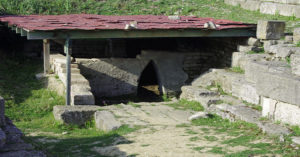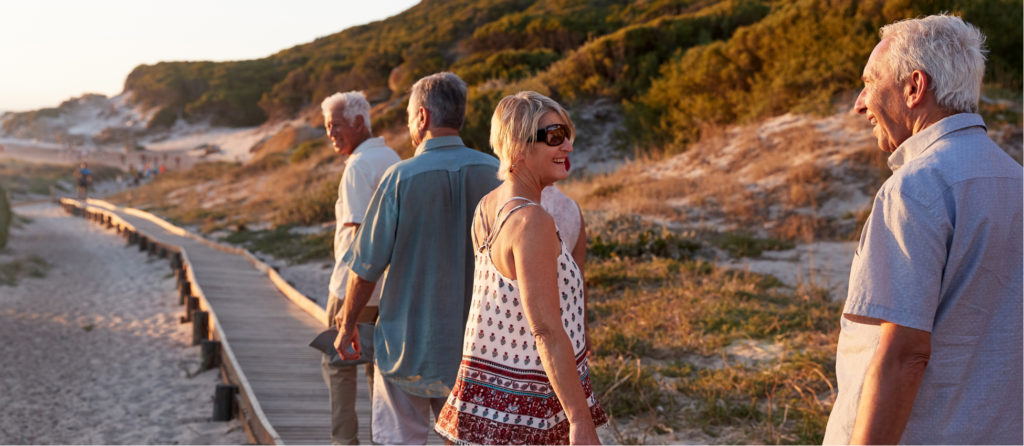Apollonia was one of the most important ancient Greek cities in Illyria with over 60,000 inhabitants and producing its own coins. It was also a refuge for the local population in times of war. It was on the River Vjosa and flourished as a trading centre until an earthquake changed the course of the river. The city became increasingly uninhabitable as the surrounding area became a swamp. Trade moved to Vlora and the city was abandoned. In the C13th a monastery was built on the site.
The remains of the ancient city stands on a hill overlooking the fertile Muzeqeja Plain. It is preserved in exceptionally intact condition, although less than 8% of the site has been excavated. It is now part of a Archaeological Park.
The porticoed Bouleuterion, with its facade of six Corinthian columns dates from the C2nd AD and was restored in the 1960s. It is the most impressive building on the site and was the seat of the city council and administration centre. Next to it are the remains of a C2/3rd temple. To the right is a street lined with the ruins of shops.
Facing the Bouleuterion are the remains of the Odeon, a small covered theatre seating about 650 spectators. Dating from the C2nd AD, this was used for musical shows, and poetry competition. To the left is a small shrine which would have had two columns in front and a statue.
Beyond this is a long portico dating from the C3rd BC. Built against the hillside, this probably had a buttressing function. It would originally have been two storeys high, with a row of pillars down the centre and statues in the niches. It seems to have been a meeting place to discuss important issues of the day.
Beyond this is a cistern which had thick walls to help keep the water cool and may also have been used for storage.
Most visitors only get this far. Beyond are the unexcavated remains which are extensive. This along with “Byllis”:http://wasleys.org.uk/eleanor/otherholidays/albania/day_five/five_two/index.html and “Butrint”:http://wasleys.org.uk/eleanor/otherholidays/albania/day_three/index.html is one of the great archaeological sites of Albania and is on all the tourist itineraries. This is a site to wander and enjoy. What you see is what you get and it doesn’t have the layers of history that you find at Butrint.
There are more pictures “here.”:http://wasleys.org.uk/eleanor/otherholidays/albania/day_five/five_three/index.html
Next to the site is the small “monastery church of St Mary”:http://wasleys.org.uk/eleanor/otherholidays/albania/day_five/five_four/index.html with an “archaeological museum”:http://wasleys.org.uk/eleanor/otherholidays/albania/day_five/five_five/index.html of finds from Apollonia. They are both well worth visiting.








